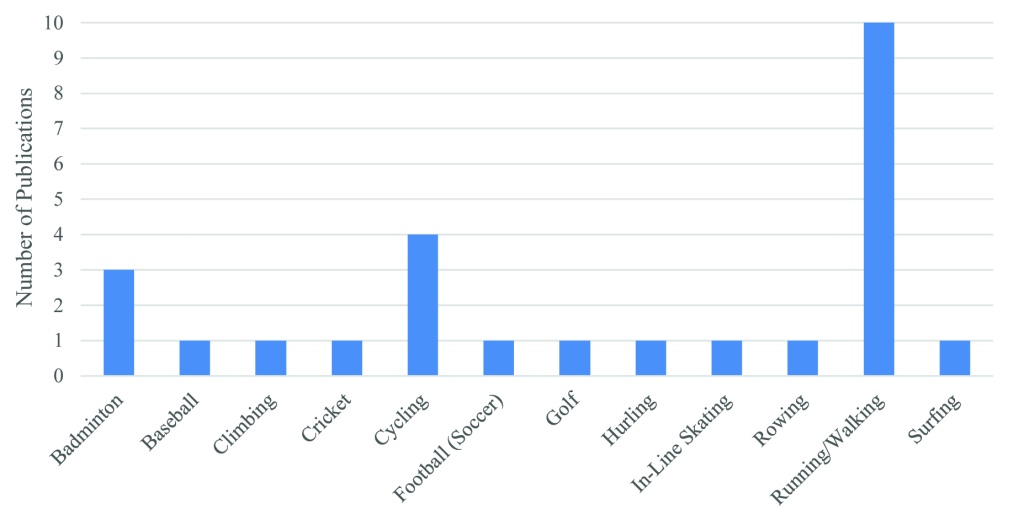
If you’re into 3D printing, no doubt you are familiar with some of the ways it is being used in sports. Some of my own products (above) have included a 3D printed bicycle frame, smart bicycle helmet and surf fins, while in the media products have included shoes, golf clubs and shin pads.
However, as a researcher, I was interested to know how this translates into academic research. How many research studies have been looking at 3D printing for sports products? How much improvement does a 3D printed product offer over a conventional one? Which sports are adopting 3D printing? Working with my brother, Dr Andrew Novak, we hypothesized that given the amount of coverage in 3D printing media, there should be quite a large amount of research supporting the developments of iconic 3D printed sports products, as well as novel developments that haven’t even made it into the media yet. The results – published in a paper titled ‘Is additive manufacturing improving performance in Sports? A systematic review‘ – were surprising (preprint version freely available).

Up until May 2019, we found only 26 academic studies that provided any empirical evidence related to 3D printing for sports products. The graph above shows which sports, and how many articles have been published. The first of these appeared in 2010. Running/walking was the most popular sport with 10 articles (38%), followed by cycling with 4 articles (15%) and badminton with 3 articles (12%). All other sports – baseball, climbing, cricket, football (soccer), golf, hurling, in-line skating, rowing and surfing – had only been assessed in single studies. This means that a lot of research into 3D printing of sports products are just one-off projects, and indicates that there may be very little funding/interest to continue building larger projects.
It also suggests that any research being done to support mainstream commercial applications of 3D printing, for example for brands like Adidas and Specialized, is protected by intellectual property (IP) and not being published.
10 articles (38%) observed improvements in performance of products developed via 3D printing compared to conventionally manufactured products, 8 articles (31%) found a similar performance, and 5 articles (19%) found a lower performance.
From a technical perspective, powder bed fusion technologies were the most utilized with 50% of articles using either selective laser sintering (SLS) or selective laser melting (SLM), although 52% of articles did not name the 3D printer used and 36% did not name any software used to design or optimize products. 3D scanning technology was also utilized in 11 articles (42%).
So, is 3D printing in sport a hit or hype? Based on this research it is clear that within academia, 3D printing is still in the very early phases of consideration, and seems to be significantly behind industry. While you may be able to go and buy some 3D printed running shoes or insoles, or cycle on a 3D printed saddle, you won’t find any objective data in journal articles on these products or much research to suggest that 3D printed products are any better than conventionally manufacture products.
– Posted by James Novak
Great post
LikeLike
Thank you.
LikeLike